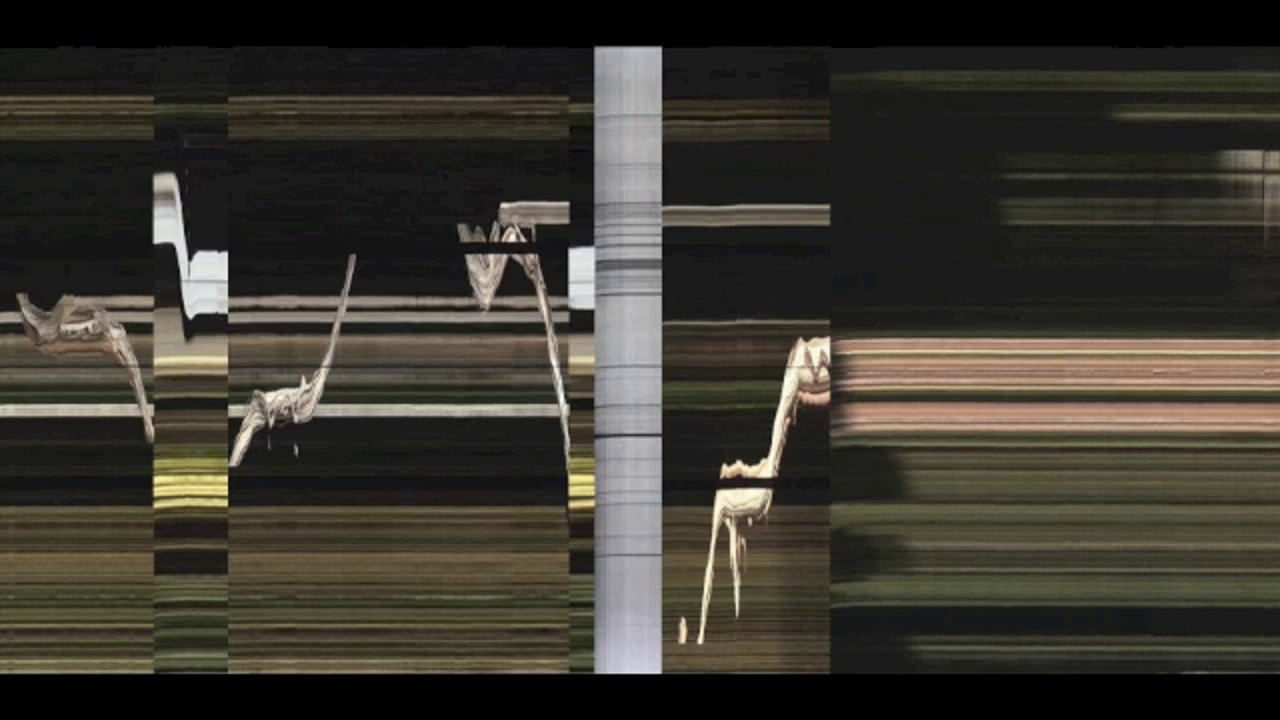Volumetric Cinema
iSpeech.org
“Volumetric Cinema” demonstrates the possibilities for “looking at film sideways,” taking the film scene as an object not just of two spatial dimensions rushing past in time, but as a spatiotemporal cube that can be manipulated, offering new methods of investigation into our understanding of moving image techniques such as editing, camera movement, and blocking.
My work intersects with digital humanities and is inspired by a tradition of scholarship that reconfigures media texts by measuring and visualizing them in new ways, including Lev Manovich’s “cultural analytics,” Michael Kipp’s ANVIL tool, Barry Salt and Yuri Tsivian’s CineMetrics, Frederic Brodbeck’s “movie fingerprints,” and the Centre Pompidou’s Lignes de temps. I use public domain software, primarily ImageJ http://imagej.nih.gov/ij/, to analyze film frames and reconstitute film scenes in novel ways. ImageJ was developed for and is primarily used in medical applications such as hematology, radiology, and the analysis of computed axial tomography (CAT) or positron emission tomography (PET) scans. Taking these last two examples, in layman’s terms tomography means imagining a series of two-dimensional “slices” of a three-dimensional volume, which can later be stacked back together and manipulated with a computer. This is useful for imaging biological structures inside the human body that otherwise remain invisible. My research begins similarly by treating films as tomograms, using ImageJ’s tools to manipulate film scenes as three-dimensional volumes and to measure (and manipulate) a scene’s color and brightness values. The result is a new kind of digital film forensics not bound to the two-dimensional slice of the film projector, but which can access and interpolate an infinite number of new volumetric slices for digital projection. My video demonstrates four increasingly complex ways that the dimension of time in moving images can be visualized: the slit-scan, the barcode, the slice and orthoslice, and the cube.
As futuristic as this work might seem, it is in fact very much in line with mid-twentieth-century criticisms of literature which sought to demystify the author’s role and treat the text as a structure for grounded analysis, for example “the structuralist activity” described by Roland Barthes in 1963, which “involves two typical operations: dissection and articulation.” To dissect is to identify “certain mobile fragments,” and to articulate is to discover “certain rules of association.” For Barthes, this activity requires a “fabrication of meaning” that finds the natural in culture. Likewise, the unreal images I discover by digitally manipulating frames fabricate a new meaning for film texts, but in a way that draws out their latent “mobile fragments.” That is, this project visualizes films in ways that were otherwise impossible for humans through most of the last century, but which do so by manipulation, not transformation: if a transformation of the image seems to arise, it is only a surprising image that is being revealed, not an image conjured from outside the film. A concrete example of this is the slit-scan photograph, built up over time by taking one thin vertical slice from the middle of each successive frame and lining them up from left to right. In the example from The Draughtsman’s Contract, we clearly see cuts, the movement of one character as she disrobes, and the fact that the camera is static, leading to a streaked background. Nothing was added to the pixels of this scene, they are simply manipulated in a radical new way.
Like much research informed by digital humanities, this work requires participation; it is not enough to read a description or see a screenshot. Indeed, many of the screenshots I produced are illegible, since they do not provide depth cues that allow three-dimensional spatial understanding. I even would often get “lost” in a volume, unmoored from the expected plane surface, and would need to reset my view to start over. I hope the form of the audiovisual essay, where I can share screen recordings of the manipulation of film volumes, at least allows for the possibility of “looking over someone’s shoulder” in order to interest others. The other technique that the video essay allows, which I could not do alone in ImageJ, is juxtaposition. To play a film clip “normally” while simultaneously watching it “sideways” breaks our perceptual habits, allowing for a better understanding of the manipulated image but also for a kind of parallax view that displaces the film image from its privileged point of view of camera-projector into an alternate digital space. No longer should we be bound to cinema as truth that exists only in a fleeting twenty-four frames-per-second. We instead should make as many frames as we want, and hold them in our hands for as long as we like to marvel at this art.
Likes: 125
Viewed:
source








Gloss